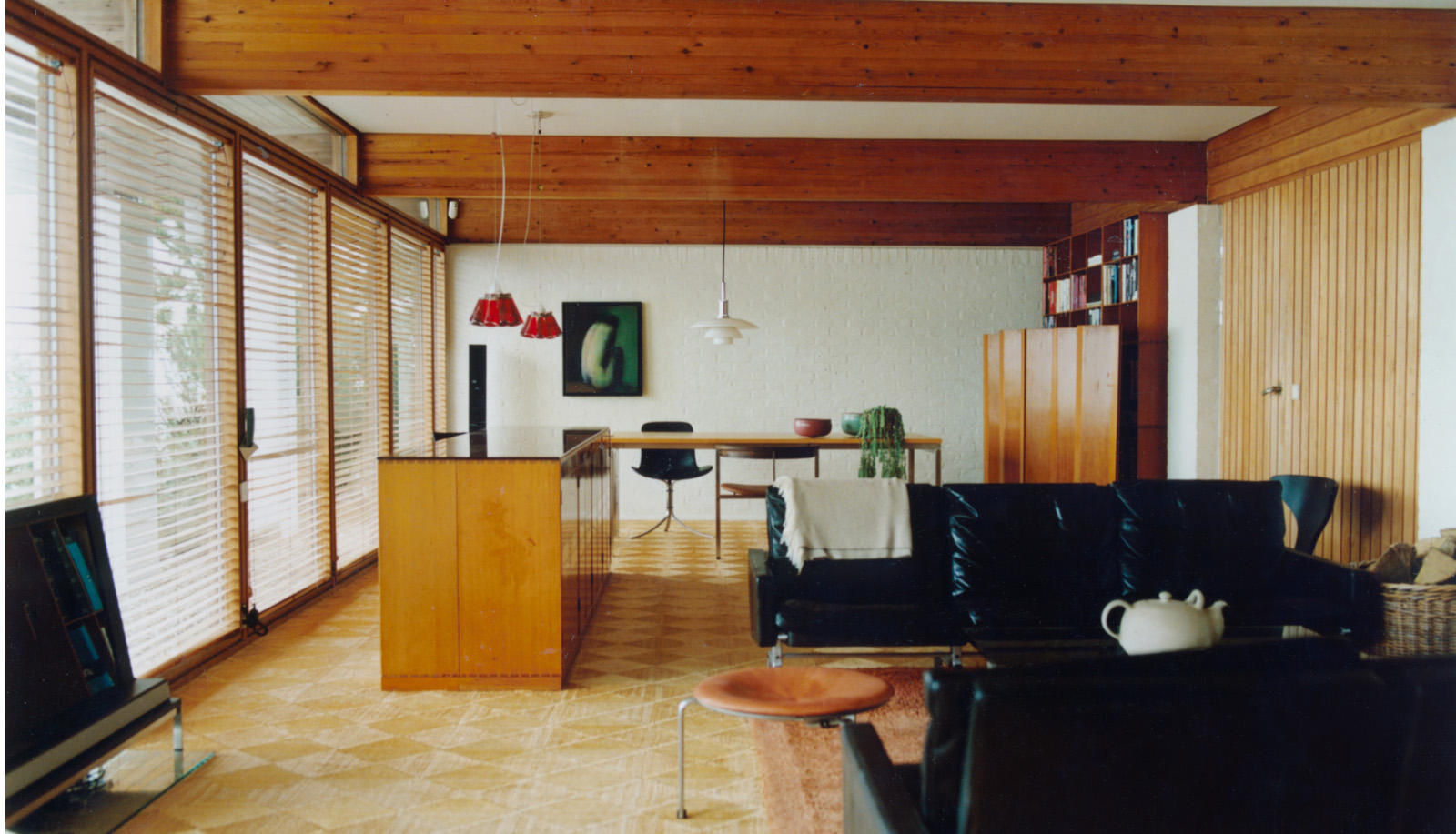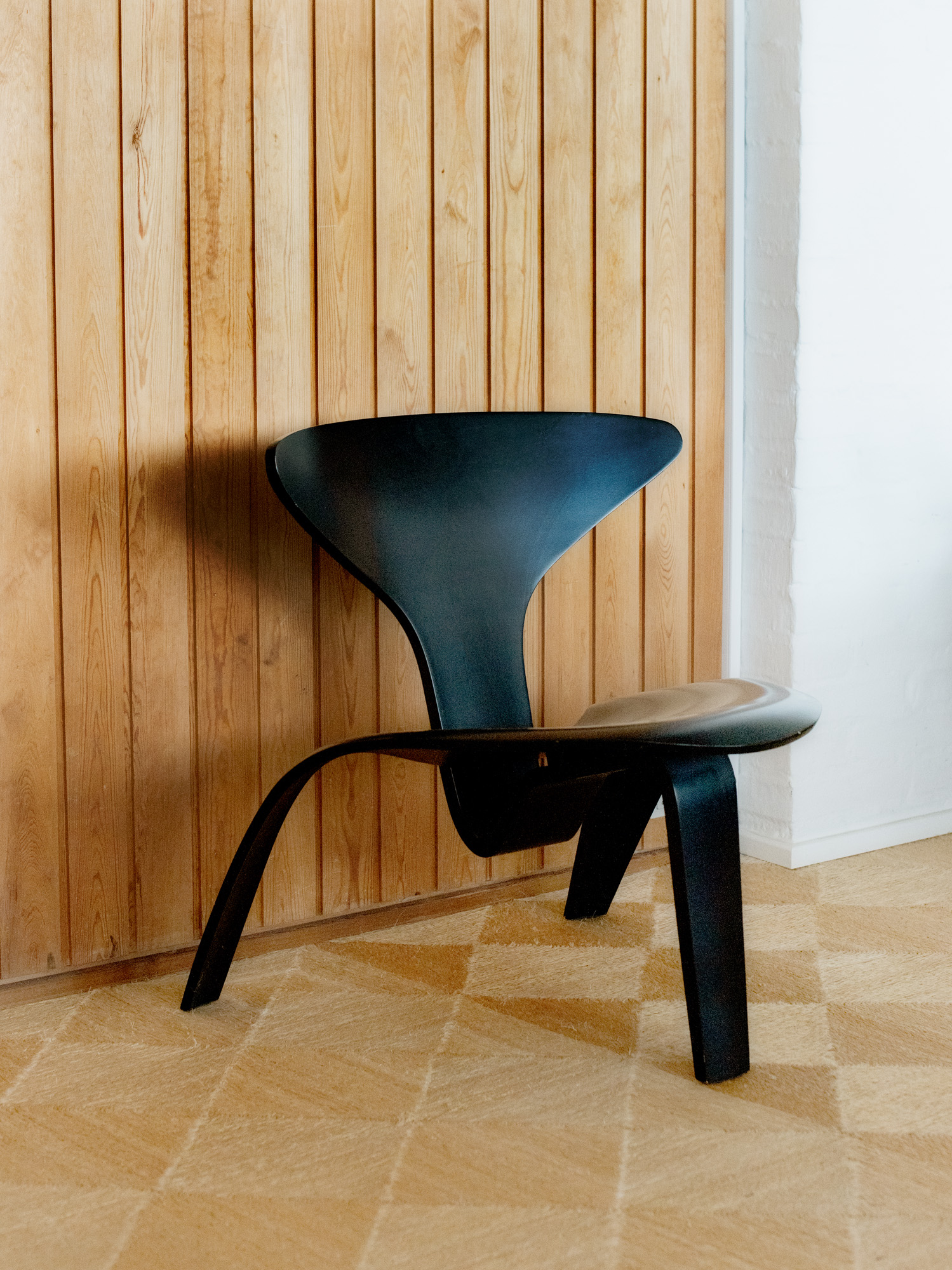Inside Poul Kjærholm's Danish family home
Iconic Danish designer Poul Kjærholm’s archive gets a new lease of life at the family residence on the Øresund strait, courtesy of his children and Fritz Hansen

Simon Heger Knudsen - Photography
The coastline of sandy beaches, forests and luxurious villas that lies north of Copenhagen is sometimes referred to as the Whisky Belt for its affluent residents, who enjoy the good life over a glass of fine spirit (rather than a pilsner beer). In the town of Rungsted, there is one inimitable villa overlooking the Øresund strait, conceived by architect Hanne Kjærholm in 1962 and filled with furniture made by her husband, the esteemed Danish designer Poul Kjærholm.

Known for his exacting precision and ability to harness the greatest potential of materials, Poul Kjærholm occupies a warm place in the hearts of Danish design lovers. The achingly beautiful simplicity of his furniture makes it appear far beyond its time. Surrounded by these pieces in Rungsted, the designer’s son Thomas Kjærholm reflects: ‘We almost took it for granted that this is how we live.’ On a grey autumn morning, Thomas has generously opened the doors of his family home. He moved back 12 years ago and has since restored the villa to how it appeared in the 1960s, with nearly all the same pieces of furniture (though not the original versions).
One of the oldest is the ‘PK4’ lounge chair designed in 1952, made when Poul had just graduated from the Danish School of Arts and Crafts in Copenhagen. Conjured up from steel and woven halyard rope, the sleek design was facilitated by the welder father of fellow Danish designer Knud Holscher and sold for a minimal fee to other students. The chair was reissued this year by the interior design brand Fritz Hansen, which has long collaborated with the Kjærholm family.
Inside Poul Kjærholm's design archive

Woven Tahitian straw flooring and vertical wood cladding are used throughout the villa, including the compact main bedroom
The grandson of Fritz Hansen, Søren Hansen, was impressed by Poul Kjærholm’s graduation project, the ‘PK25’ chair (otherwise known as the ‘Element’ chair), made from rope and a single piece of steel. He hired the young designer to ‘come upwith his own ideas, but also mainly to work as an architect for Arne Jacobsen’. In contrast though to contemporaries like Jacobsen, ‘my father did everything himself’, Thomas explains. Furthermore, Kjærholm made a comparatively limited number of designs, which only adds to their allure today.

The ‘PK4’ lounge chair was designed by Poul Kjærholm in 1952 and reissued this year by Fritz Hansen, which has long collaborated with the Kjærholm family
After a year with Fritz Hansen, developing such landmark works as the ‘PK0’ shellchair in black-coloured ash, Kjærholm grew frustrated and supposedly asked Hansen to choose between him and Jacobsen. Following his departure, Kjærholm forged a partnership with the furniture manufacturer Ejvind Kold Christensen, whom Thomas credits as ‘the one who invented Poul Kjærholm’. It was Kold Christensen that found the plot of land in Rungsted, and installed himself two doors down, creating a purposeful buffer in between designer and manufacturer. The two families were close and as a boy Thomas remembers being invited by Kold Christensen, who was ‘like a grandfather’, to go fishing every Sunday.

The 1961 ‘PK-91’ stool was inspired by an ancient Egyptian folding stool dating back to 1500BC
The forest and sea of Rungsted reminded Hanne and Poul Kjærholm of rural Jutland, the northern peninsula of Denmark where they both grew up, and where Poul trained as a cabinetmaker. In his small town, the designer was expected to fulfil the role of both cabinetmaker and undertaker as he could make coffins. ‘I think my father got a little depressed about that. He wanted to go further,’ says Thomas.
The Kjærholms loved to be so close to nature and Thomas recalls that he was forever outside in the forest. Poul too wanted his colour palette to stem from nature. One particular story of family folklore recounts how a client asked if the Milan Triennale prize-winning ‘PK22’ chair could be made in green leather, to which Poul replied: ‘Have you ever seen a green cow?’ ‘So, the debate was over!’ Thomas laughs.
Receive our daily digest of inspiration, escapism and design stories from around the world direct to your inbox.

Another notable piece, placed by a window, is the ‘PK15’ – Poul Kjærholm’sfinal chair, which he conceived in the late 1970s and was reissued by Fritz Hansen in September 2023. The ‘PK15’ exemplifies his pursuit of clarity and essential form,made from pieces of steam-bent wood and French cane. For Kjærholm, the utmost importance of materials had been ingrained by his cabinetmaker training, as well as a respect for traditional craftsmanship. He did not disguise the seams of leather or the twists of screws, but markedly celebrated the construction of his designs.
‘We don’t have any doorsteps if you noticed,’ Thomas points out as one of countless personal details of the villa’s design. Poul suffered from a limp as one leg was shorter than the other, so Hanne designed a house that would allow her husband touse a wheelchair later in life. When his father walked, Thomas says, it looked as if‘he was dancing’. Then there are the flush doors that disappear into the walls and the woven Tahitian straw flooring, purchased from Kold Christensen.

The single-storey villa is punctuated by beams and columns that emphasise its symmetrical design. The living room, which stretches the entire width of the house, is divided into distinct areas where the family might gather to eat, study and relax. Thomas recalls how his father would curl up on the sofa while his mother sat cross-legged by the fireplace, and he lay beneath the table.
The villa is testament to the Kjærholms’ understanding of furniture and space, and how one might inform the other. Through Poul’s eyes, the arrangement of furniture transformed a space into a place where life and relationships could unfold – there isno finer example than his own home. He preferred to be called a ‘furniture architect’ than a designer. ‘It was a finer thing to say I think, more precise,’ Thomas suggests, ‘because a designer can be many things. Architecture, that’s more sculptural.’ Indeed, Poul was inspired by the abstract forms of sculptors such as Henry Moore, Barbara Hepworth and Isamu Noguchi.

Poul died a few months after he was diagnosed with lung cancer in 1980. A year later, Kold Christensen sold the production rights for Kjaerholm’s furniture to Fritz Hansen. In 2003, Fritz Hansen rolled back its production of several designs, which Thomas decided to produce himself, before the designs were reacquired along with the entire Kjærholm catalogue by Fritz Hansen in 2014.
Today, Thomas and his sister Krestine manage the Kjærholm archive and work closely with Fritz Hansen to decide which pieces are brought into production and which new innovations with materials and colours are considered. Recently, this has included marble from the Norwegian town of Fauske, used for a new version of the ‘PK54’ dining table. Thomas and Krestine are also teaching their own children about the Kjærholms’ legacy. ‘We are training them so they can take over one day.’
For now, a feeling of calm pervades the villa. We are invited to take a breath, to appreciate our place within the Kjærholms’ idyll and the world that surrounds us.
Poul Kjærholm pieces are available from Fritz Hansen, fritzhansen.com

The 1952 ‘PK0’ lounge chair is based on the sculpturesof Henry Moore and Barbara Hepworth
-
 Alexander Wessely turns the Nobel Prize ceremony into a live artwork
Alexander Wessely turns the Nobel Prize ceremony into a live artworkFor the first time, the Nobel Prize banquet has been reimagined as a live artwork. Swedish-Greek artist and scenographer Alexander Wessely speaks to Wallpaper* about creating a three-act meditation on light inside Stockholm City Hall
-
 At $31.4 million, this Lalanne hippo just smashed another world auction record at Sotheby’s
At $31.4 million, this Lalanne hippo just smashed another world auction record at Sotheby’sThe jaw-dropping price marked the highest-ever for a work by François-Xavier Lalanne – and for a work of design generally
-
 NYC’s first alcohol-free members’ club is full of spirit
NYC’s first alcohol-free members’ club is full of spiritThe Maze NYC is a design-led social hub in Flatiron, redefining how the city gathers with an alcohol-free, community-driven ethos